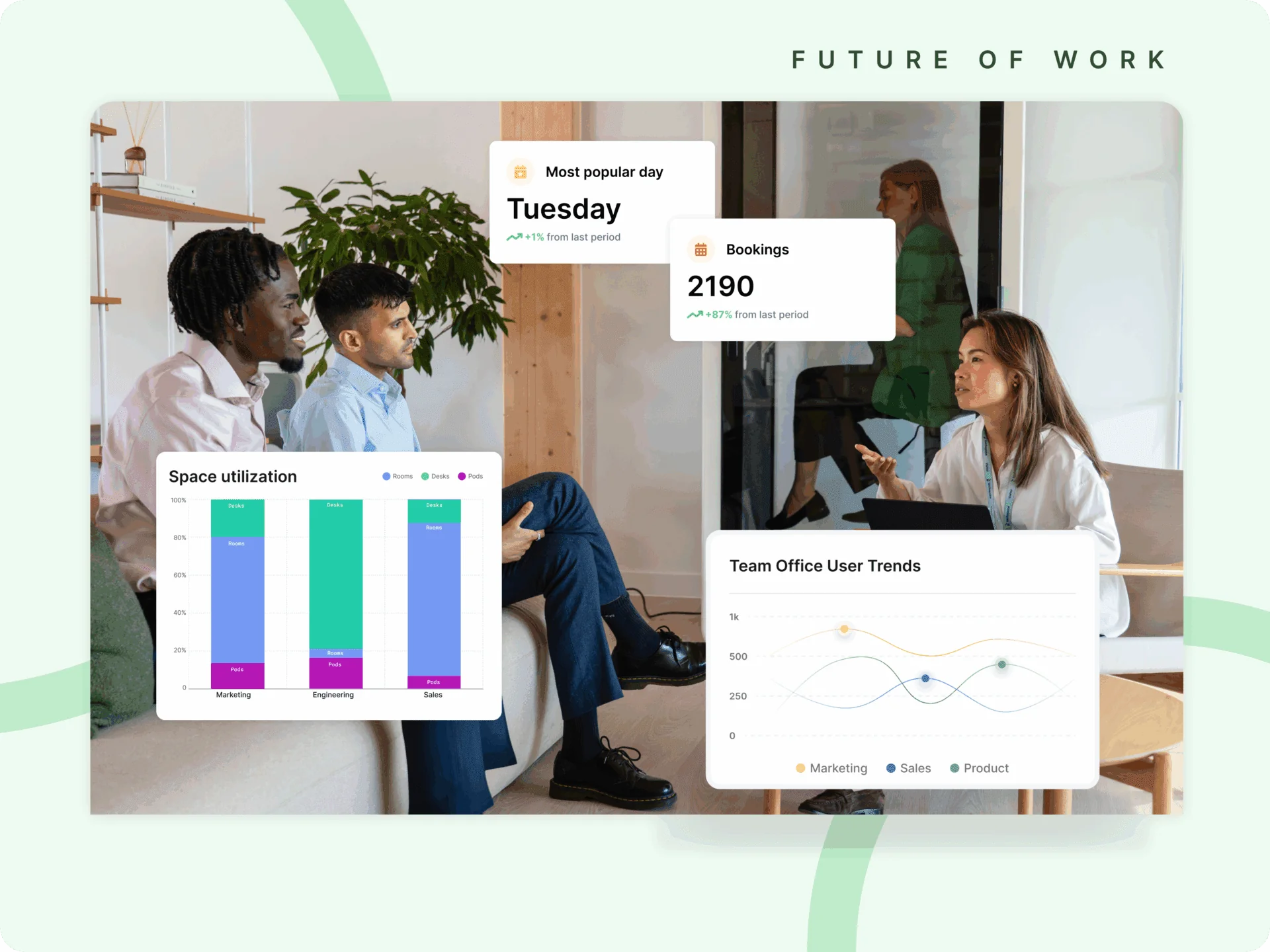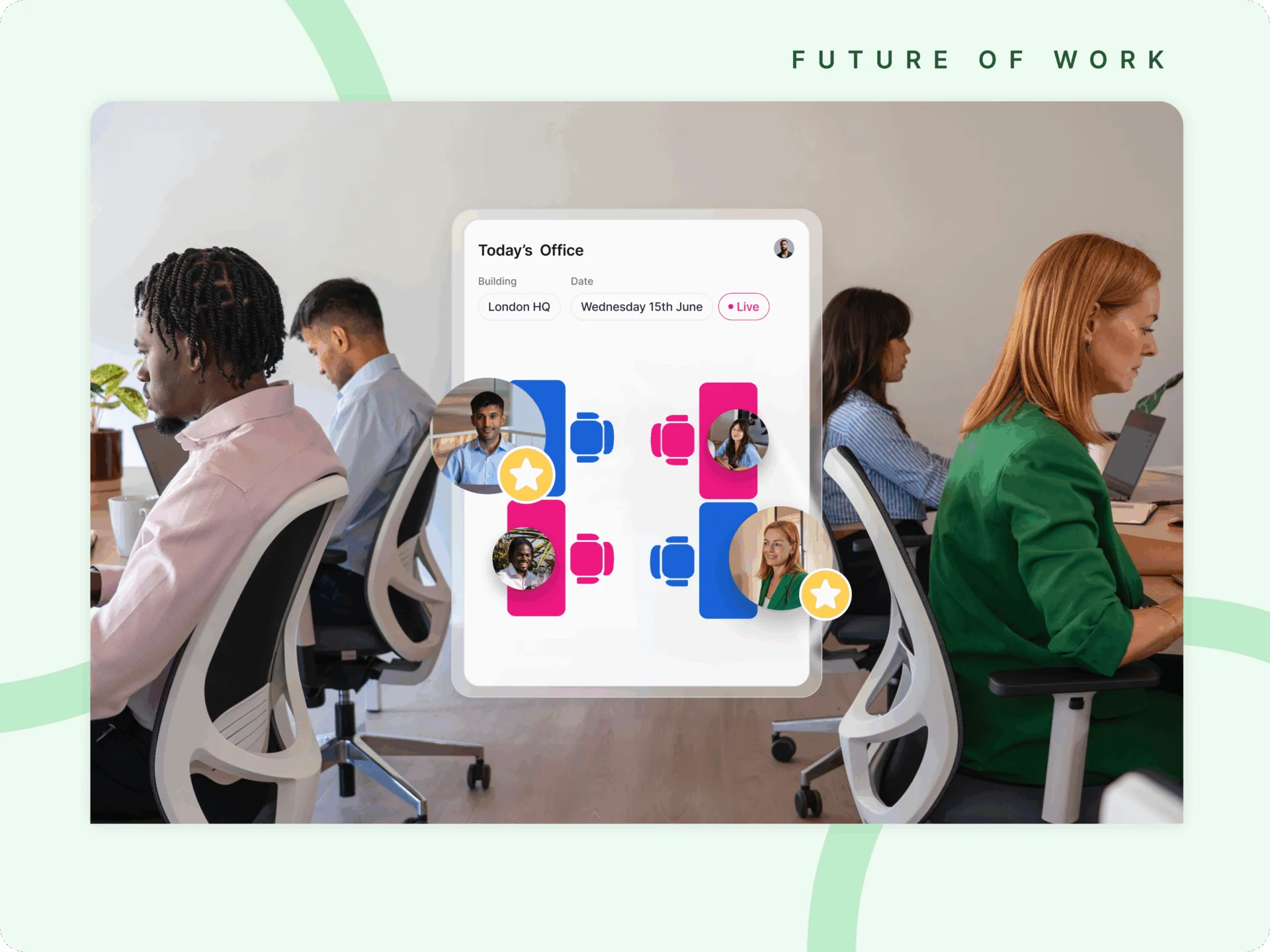Why Successful Desk Hoteling Needs Office Workers To Check In
As we eagerly anticipate a post-Covid world, businesses find themselves under pressure to adapt to a new workplace culture. Employees expect a safe and sanitized office environment, and many will want to continue working remotely for at least some of the time. Cutting real estate is a likely step to protect the bottom line and adapt to a more remote or hybrid workforce. This means workplace leaders and space planners need to make the most of the space they have. Desk hoteling seems to provide the perfect solution – but is it, if you don’t know who checked in and when? This leads us nicely to occupancy data.
Occupancy Data: The Secret Ingredient For Successful Desk Hoteling
We’ve identified that a key ingredient in getting the most out of desk hoteling is to secure accurate occupancy data. If you can build a digital desk booking process that makes it easy to check in to a reservation every time, you’ll gain hugely valuable insights that you can use to drive efficiencies, match resources with demand, and boost productivity.
The Value Of Securing A Check-In To A Desk Reservation
Occupancy data reveals how your employees interact with your office space. This is particularly important now that many businesses have reduced real estate and resources, and irregular demand from employees who want to use the office to collaborate could come at any time.
The hyperlocal data that desk scheduling systems such as Kadence deliver mean you gain a detailed breakdown of how and when your space is being used. Crucially, it also tells you whether a booking has been used at all. If you can secure the check-in every time, you’ll know exactly when a desk is used, who has used it and for how long.
But how does this help you manage your workplace?
Efficient Space Planning

As occupancy data shows you how intensively a space is used over time, if you see underused areas, it’s an obvious opportunity for cost savings.
The data helps when planning office configuration too. Perhaps a cluster of desks near a window is always full, while there are no bookings for a gloomier part of the office. You’ll be able to identify this pattern in your occupancy data and take steps to fix it.
To move this approach to the next level, feed your office occupancy data into Building Information Modelling (BIM) systems to contribute to new space planning and building design.
A Safe And Sanitized Workspace With Data-Informed Cleaning Schedules
In a desk hoteling environment, a digital check-in process and the resulting data informs cleaning schedules, to make sure desks are sanitized between users. A desk isn’t released for use until it’s been cleaned and prepared for the next person. Desk turnover data will help you manage cleaning schedules and plan resources.
In the event of an infection, contact tracing is easy. Your data will show you the exact desks individuals used, and when they used them.
Analytics That Optimize The Workplace For Business Cadence And Productivity
Data helps you understand how different teams interact in your office space and how people use different office neighborhoods. You can then plan your facilities to support productivity and find the best business cadence.
If you know certain teams need certain equipment or like to sit together at a regular time each week, you can plan your space and equipment availability so they’ve got it when and where they need it.
Data-Driven Energy Use: Better For People, Planet And Profit
Optimizing the energy efficiency of your office environment helps the planet, boosts employee comfort and improves your bottom line. Occupancy data will help you manage your heating, air conditioning and lighting by showing you when and where your highest energy demands are.
Ways To Collect Occupancy Data
You can collect occupancy data in a variety of ways but two main ones are by installing occupancy sensors or as part of a desk booking software process.
Occupancy Sensors
Occupancy sensors count how many people are in a space or how often a desk is used, thanks to technologies such as ultrasound and infrared, which detect movement. However, they don’t tell you who is using the space, or if it was by the person who made the booking. And your employees don’t interact with the sensors or get any value from them – the sensors just count in the background.
Desk Booking Software For Occupancy Data
Desk booking software, on the other hand, lets you record desk check-ins and discover which desks are used, for how long and by whom. This is the most valuable data to capture – that an identified person has checked in to a reservation.
You get a much deeper level of insight than simply how many people are in a space. You’ll begin to understand the cadence of office usage and be able to plan spaces that maximize productivity, efficiency, and comfort. What’s more, you can give something back to your people when they check in, as you’ll discover below.
Defining A Desk Hoteling Check-In Process That Really Works
So, to get hyperlocal occupancy data and insights into desk usage, we know you need a watertight desk check-in process. But how does that work in practice?
First up, put user experience at the heart of the process. If the desk booking software is overcomplicated, clunky or glitchy, people won’t want to use it. The result? You’ll never get the check-in and other data you need.
But go further. Don’t just make the software easy for people to use, include features that improve their working lives. This might include the option to book space close to colleagues, or wayfinding to help them locate their booked desk. It then becomes a natural part of their working routine.
Let’s take a look at the steps that make up this process.
1. Desk Booking And Arrival
It begins with an employee reserving a desk space. Ideally, they’ll do this through an easy-to-use app, such as the Kadence workplace mobile app. They can check availability and book through a smartphone while on the move, or on their desktop if they’re organizing their schedule from their desk.
When they arrive in the office, the app should detect their presence. It will then alert them to the booked desk location via their smartphone, and give them simple directions to the correct floor, office and desk.
Check-in prompts will remind them to check in to their desk. If they don’t, the central system will be alerted, making it easy to identify no-shows and remotely re-assign a desk space as available. This benefits other people who want to work in the office as they will have more available desks to choose from.
2. Making Desk Availability Visible
It’s reassuring and helpful for employees to see at a glance which desks are available.
When it comes to social distancing and providing adequate space between employees, a best practice booking system will remotely mark desks as unavailable on a floor plan in the app. When somebody finishes using a desk, it can be marked as unavailable until it’s been cleaned. A smart system will use occupancy data to alert cleaning staff automatically, so they can prepare the desk for the next person as quickly as possible.
3. Safe And Easy Touchless Check-In
Being able to check in via the mobile app without touching equipment gives employees control and the reassurance that they’re keeping themselves and others safe.
A Sata Layer That Gives A Holistic View To Future Proof Your Workplace
When you operate desk hoteling through a cloud-based desk booking and scheduling system, the accurate occupancy data layer you get allows you to respond in real time to changing conditions, future proofing your workspace by making it both agile and dynamic.
You’ll be able to make smart, insight-driven planning decisions that get the most out of your desks and spaces, drive productivity, and meet the needs of a hybrid workforce with a seamless and safe transition between remote and office working.
If you’d like a chat or a demo with one of our team to see how Kadence’s desk booking software could help you meet the challenges of the new era of work, why not pick a time in our calendar to suit you?




